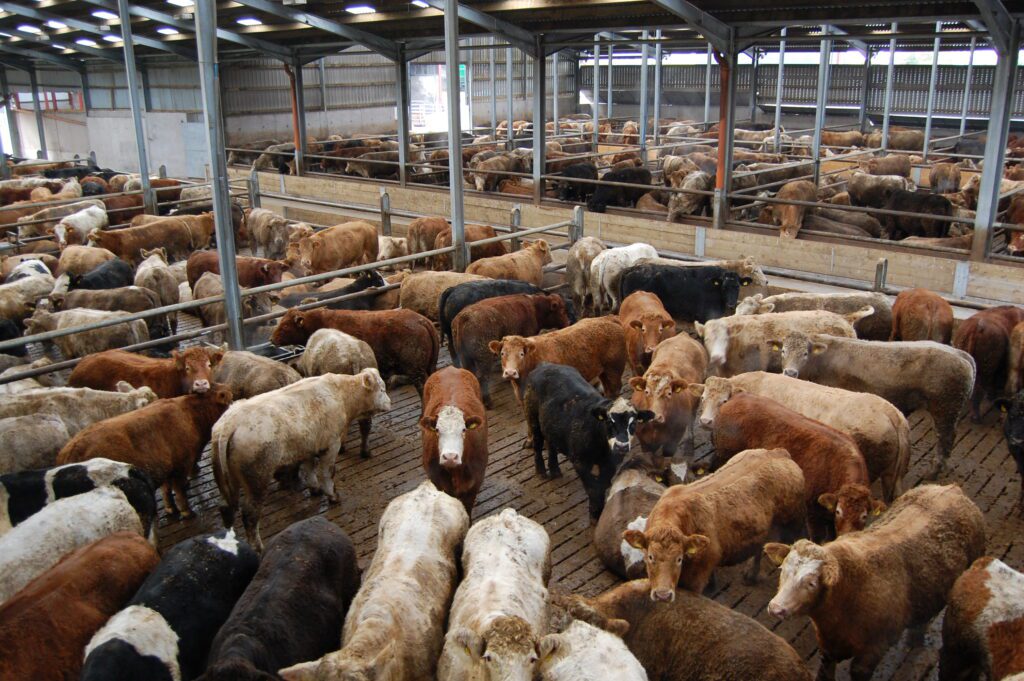Cattle’s diet, the way they are housed and how the animals are transported all affect cattle cleanliness, according to Teagasc.
There is an onus farmers, hauliers and factory operators to ensure that animals entering a slaughter plant are clean, so as to avoid the contamination of meat during the slaughter process.
Teagasc have identified five key areas which farmers can concentrate on to improve the cleanliness of their cattle.
1. Diet
Where possible feed higher dry matter diets, while reducing the amount of wet silage, roots and molasses pre slaughter will also improve the cleanliness of the cattle.
It is also advisable to avoid any sudden changes to the diet.
2. Housing
The manner in which cattle are housed also plays a huge role. Achieving the right stocking rate for slatted pens will also have an affect on how clean the animals will be.
It is suggested that keeping any solid areas in the shed free from dung build up will also have a positive affect.
Meanwhile, when using straw bedding, farmers should change the bed regularly using adequate amounts of straw. All sheds should be well ventilated to keep cattle clean and dry.
3. Husbandry
Keeping animals dosed and worm free will minimise scouring, while their diets should be well balanced for vitamins and minerals, according to Teagasc.
It is also advisable to trim the animal’s tails and shave along the backs of cattle as they are brought in to be housed.
4. Pre-Sale Management
In preparing the cattle prior to sale or sending them to slaughter farmers should avoid mixing unfamiliar groups of cattle.
In a case where cattle may be very dirty, these animals should be moved to dry straw bedding in the final two-to-three weeks pre-slaughter.

It is important that cattle are not starved and are provided with plenty of water in the final 24hrs prior to moving, Teagasc advises.
With regards to their diet, any low dry matter feeds should be removed in the final 48hrs pre slaughter and replaced with straw or high DM silage.
5. Transport
Loading cattle during wet conditions or when the animals are already very wet should be avoided where possible, states Teagasc.
Hauliers should pen cattle correctly and check them regularly during transit, while covered trailers should be well ventilated to avoid stock sweating.
Trailers or vehicles used to transport stock should be cleaned and disinfected between loads, while the the use of sawdust on the trailer floor is not at advisable.


